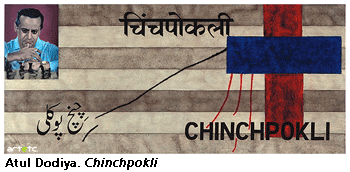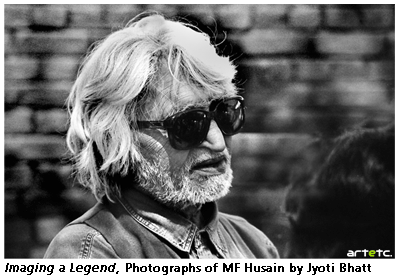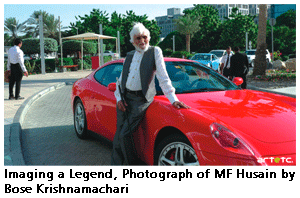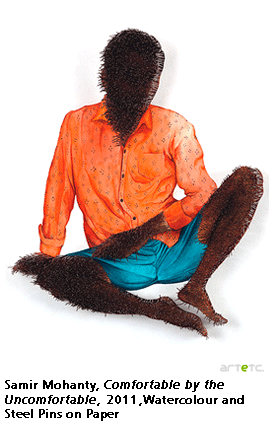- Publisher's Note
- Editorial
- Looking from the Other Side
- Women in Rabindranath Tagore's Paintings
- Ramkinkar Baij's Santhal Family
- The Birth of Freedom in Moments of Confinement
- Jamini Roy's Art in Retrospect
- The Great Journey of Shapes: Collages of Nandalal Bose
- Haripura Posters by Nandalal Bose: The Context and the Content
- The Post-1960s Scenario in the Art of Bengal
- Art Practice in and Around Kolkata
- Social Concern and Protest
- The Dangers of Deifications
- Gobardhan Ash: The Committed Artist of 1940-s
- Gopal Ghose
- Painting of Dharmanarayan Dasgupta: Social Critique through Fantasy and Satire
- Asit Mondal: Eloquence of Lines
- The Experiential and Aesthetic Works of Samindranath Majumdar
- Luke Jerram: Investigating the Acoustics of Architecture
- Miho Museum: A Structure Embedded in the Landscape
- Antique Victorian Silver
- Up to 78 Million American Dollars1 !
- Random Strokes
- Are We Looking At the Rise of Bengal
- Art Basel and the Questions it Threw Up
- What Happened and What's Forthcoming
- Art Events Kolkata, May – June 2012
- Mumbai Art Sighting
- Delhi Dias
- Art Bengaluru
- Preview June, 2012 – July, 2012
- In the News, June 2012
ART news & views
Mumbai Art Sighting
Issue No: 30 Month: 7 Year: 2012
by Jasmine Shah Varma
Musing cinema and city
 The idea of Mumbai as a city and the film industry it houses are intertwined. To celebrate 100 years of cinema these two themes were explored by visual artists, filmmakers, architects, historians and urban scholars in a collaboration titled Project Cinema City. This endeavour took four years to come together and was on view at the National Gallery of Modern Art, Mumbai from May 19 to June 29. There are plans to showcase this unusual project at the NGMA in Delhi and Bangalore. It was executed by Majlis, a centre for interdisciplinary art practices in Mumbai in collaboration with Kamla Raheja Vidyanidhi Institute of Architecture and Environment Studies. The curators of the project were Madhushree Datta, director of Majlis and artist Archana Hande.
The idea of Mumbai as a city and the film industry it houses are intertwined. To celebrate 100 years of cinema these two themes were explored by visual artists, filmmakers, architects, historians and urban scholars in a collaboration titled Project Cinema City. This endeavour took four years to come together and was on view at the National Gallery of Modern Art, Mumbai from May 19 to June 29. There are plans to showcase this unusual project at the NGMA in Delhi and Bangalore. It was executed by Majlis, a centre for interdisciplinary art practices in Mumbai in collaboration with Kamla Raheja Vidyanidhi Institute of Architecture and Environment Studies. The curators of the project were Madhushree Datta, director of Majlis and artist Archana Hande.
The scope of the exhibition was wide including paintings, interactive installations, video works, sound installations, short films anda calendar art project. The essence of Mumbai and the film industry and how they related to it was brought out by the visual artists. The architects addressed the production aspects of the film industry by mapping the topography of the city where studios, shooting locations and shops catering to film production needs were traced through a maze of pipelines - another metaphor for Mumbai. Historical data of the evolution of the city and the film industry through the 20th century was outlined through text and documents. Controversial and problematic aspects of the cinema industry such as the vague and ancient Indian Cinematograph Act 1918 were explored. The dearth of proper documentation on the India's cinema history was also pointed out through some works.
Atul Dodiya's Fourteen Stations, Shreyas Karle's Vastusangralaya ki Dukan, Pushpamala N's Return of the Phantom Lady (Sinful City), Anant Joshi's Untitled rotating wooden objects installation were specially created works for this project. One of the highlights of the show was the Calendar Art Project involving 56 artists each of whom captured the essence of a chosen year in the 20th century through popular cinema inspired, kitschy iconography.They addressed events, political and social concerns, fashion or simply the life and times of agiven year. Gulammohammed Sheikh, Shilpa Gupta, Shakuntala Kulkarni, Sudhir Patwardhan, Meera Devidayal, Ranbir Kaleka, Mithu Sen were among the artists who integrated history, aesthetics and wit in their well thought out creative calendars.
The project was academic in parts and a creative exploration of a city and the life through the prism of the cinema industry. It seemed to be an effort to understand the city and cinema from an atypical viewpoint. It was entertaining and engaging in parts and when some of the parts didn't work, there was so much else to get engrossed in like eavesdropping on telephone conversations in Paromita Vohra's installations So Near Yet So Far or checking out Kaushik Mukhopadhya's Bioscope.
Remembering Husain

 On June 9th, M F Husain's first death anniversary, photographers paid tribute to the artist by going through the memory lane. They dug out images of him from their archives and a collection of those was displayed at Tao Art Gallery. Imaging a Legend, which concluded on June 24, was curated by Niyatee Shinde and Fawzan Husain.
On June 9th, M F Husain's first death anniversary, photographers paid tribute to the artist by going through the memory lane. They dug out images of him from their archives and a collection of those was displayed at Tao Art Gallery. Imaging a Legend, which concluded on June 24, was curated by Niyatee Shinde and Fawzan Husain.
Though the years when the photographs were taken were not provided, one could see Husain in different moods, doing various activities and his travels to different cities. In a rare picture for a magazine shoot he is seen cooking in a kitchen. Sooni Taraporewala's capture of various hand gestures while Husain conversed poignantly recalled the artist's vivacious persona. Husain taking pictures, or lost in the frenzy of painting a canvas, walking barefoot, his famed brush-walking stick, with his family, at his 95 birthday celebrations are few of the moments one came across in this exhibition.
Some of the participating artists were Atul Kasbekar, Pablo Bartholomew, Raghu Rai, Fawzan Husain, Jyoti Bhatt, Bose Krishnamachari, Dadiba Pundole and newspaper photographers such as Ashish Rane, Kedar Nene, Mukesh Parpiani among others.
New beginnings
 Art for Young Collectors is a group show of artists' who are in their work Twenties. This exhibition at Galerie Mirchandani + Steinrucke means two things: The future generation of visual artists get their first big opportunity to exhibit soon after their academic training. The second is a chance to buy relatively inexpensive art.
Art for Young Collectors is a group show of artists' who are in their work Twenties. This exhibition at Galerie Mirchandani + Steinrucke means two things: The future generation of visual artists get their first big opportunity to exhibit soon after their academic training. The second is a chance to buy relatively inexpensive art.
This exhibition of eight artists, from art colleges in Baroda and Hyderabad, showcased distinctive visual languages and heartfelt concerns. Savvy use of material towards creating an idiom and an unpretentious approach made it a stimulating experience. Twenty-three year old Samir Mohanty displayed how to make the material work for him. In Comfortable by the Uncomfortable, the watercolour rendition of man in blue short pants is covered in parts with steel pins. From a distance one may not be able to decipher that there are so many closely held rusted pins, but going near one sees them painfully pricking the life-like portrait of a seated man. Pins and discomfort is obvious symbolism, but the simplicity and heartfelt emotion pure came through Mohanty's rendition.
Miniature painting took a contemporary twist in Arundhati Saikia's small format paintings on silk and wood. The interpretation of mythical characters was a visual delight. Animal headed men, decorative paisley motifs in window arches made one wonder about what story was being narrated, if at all. Also noteworthy was Bastar's Juhikadevi Bhanjdeo's installation made of woven threads and everyday objects like soap dispensers. The immaculately rendered object hanged from the ceiling like a veil holding commonplace objects wrapped in thread. She questions the boundaries of craft techniques, everyday objects entering the art context and contemporary artistic concerns through this work. When do you title an object art?
This and many more questions were raised by the youngsters in Art for Young Collectors which was on view till July 28. While the gallery had presented a careful selection of talent, the title of the show betrayed the artists a wee bit as the concern for marketing became primary, preceding the individual art practices.